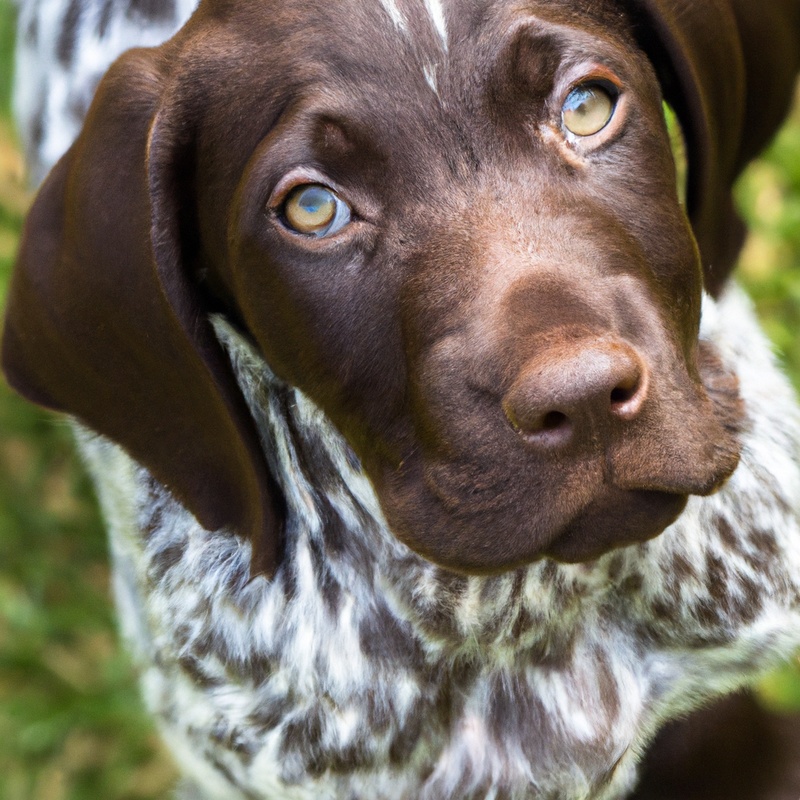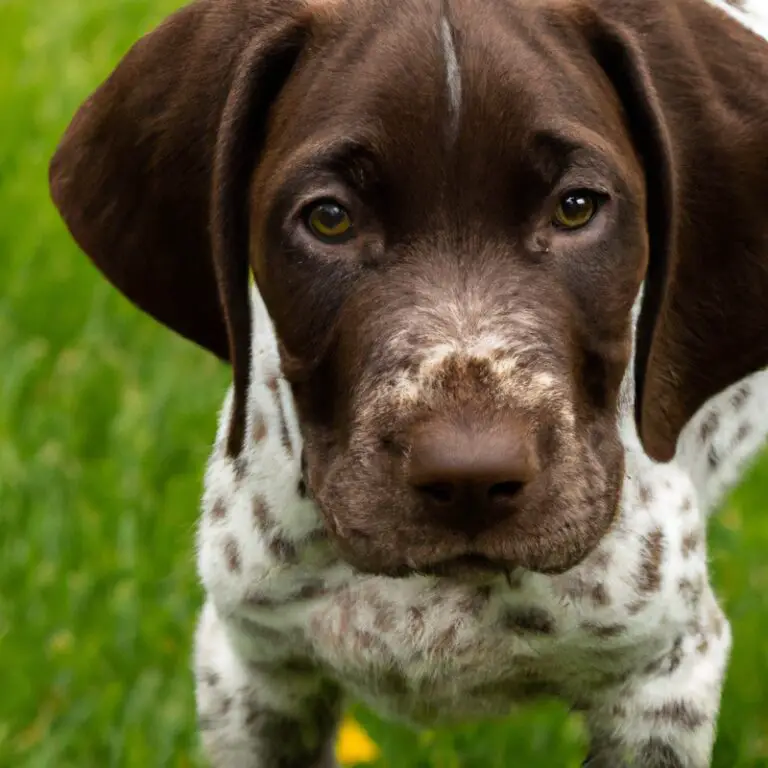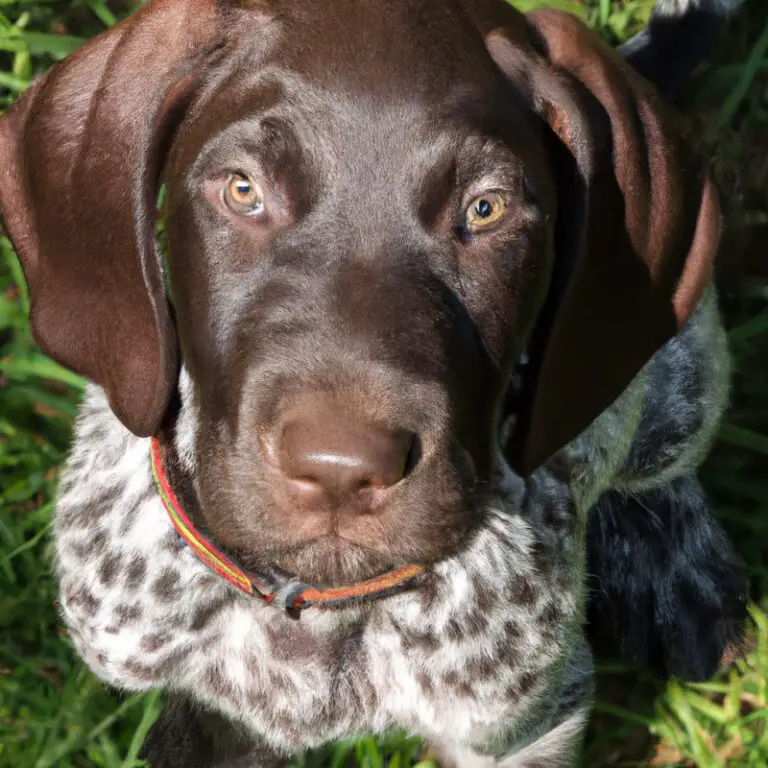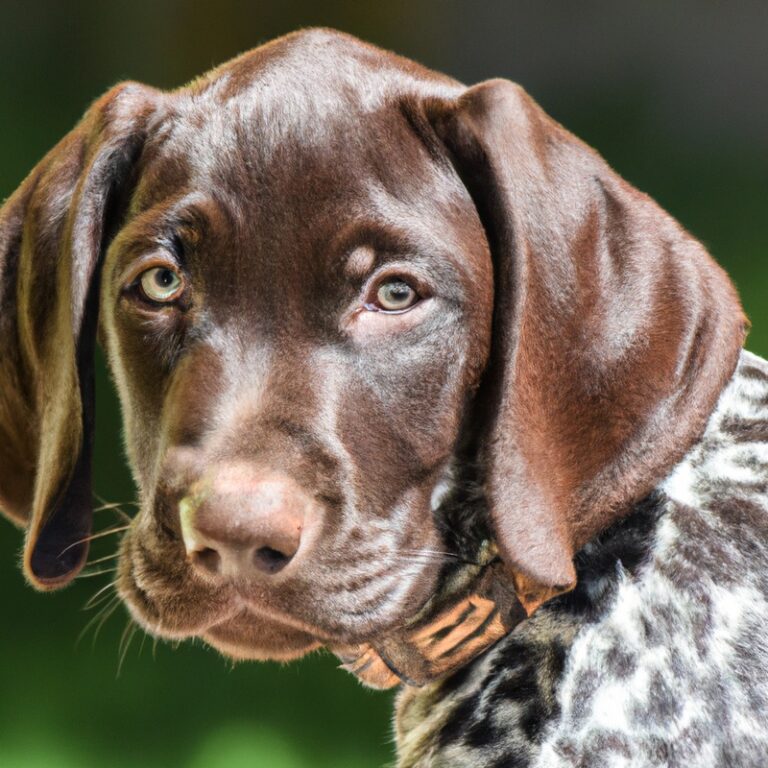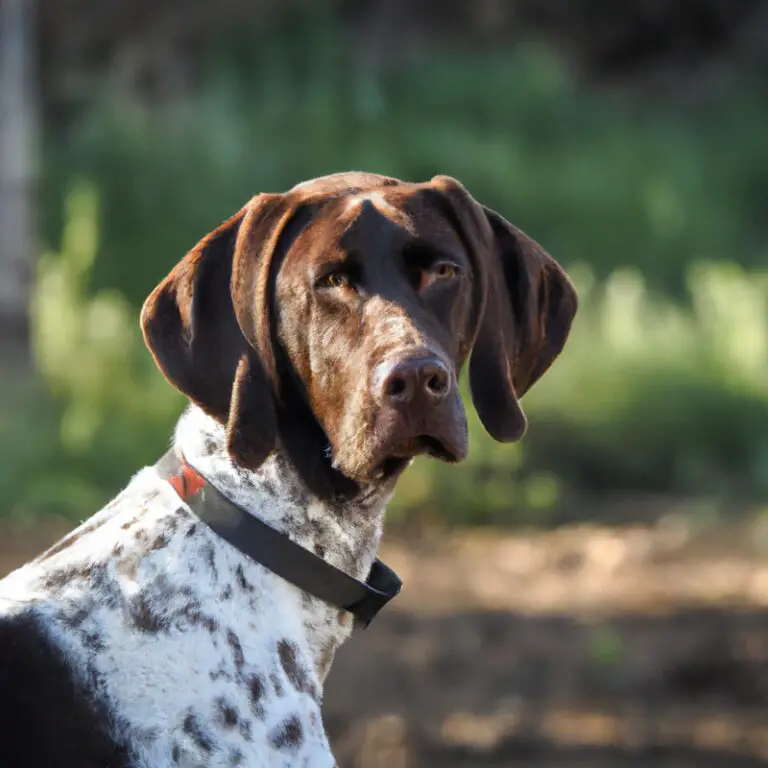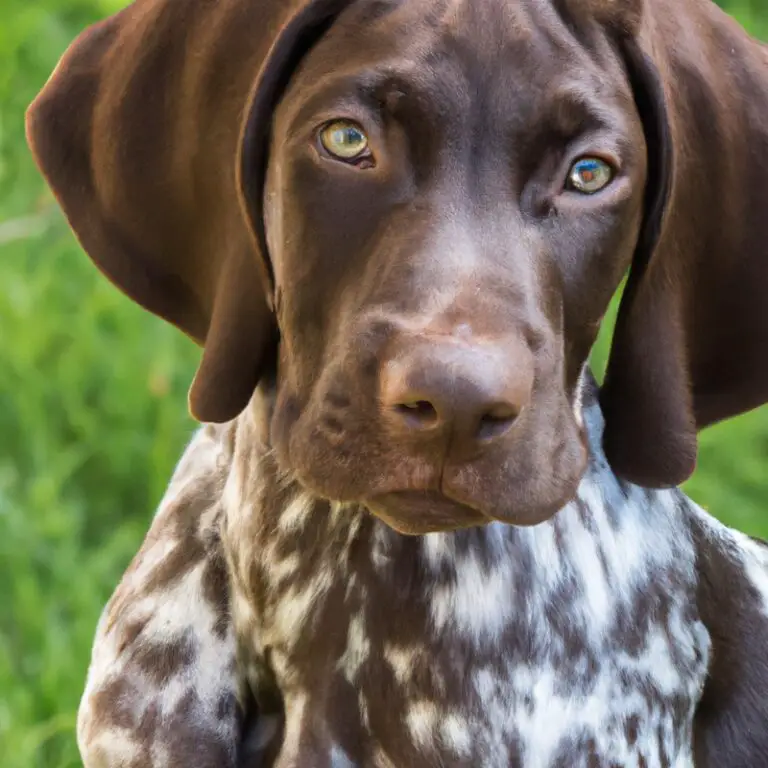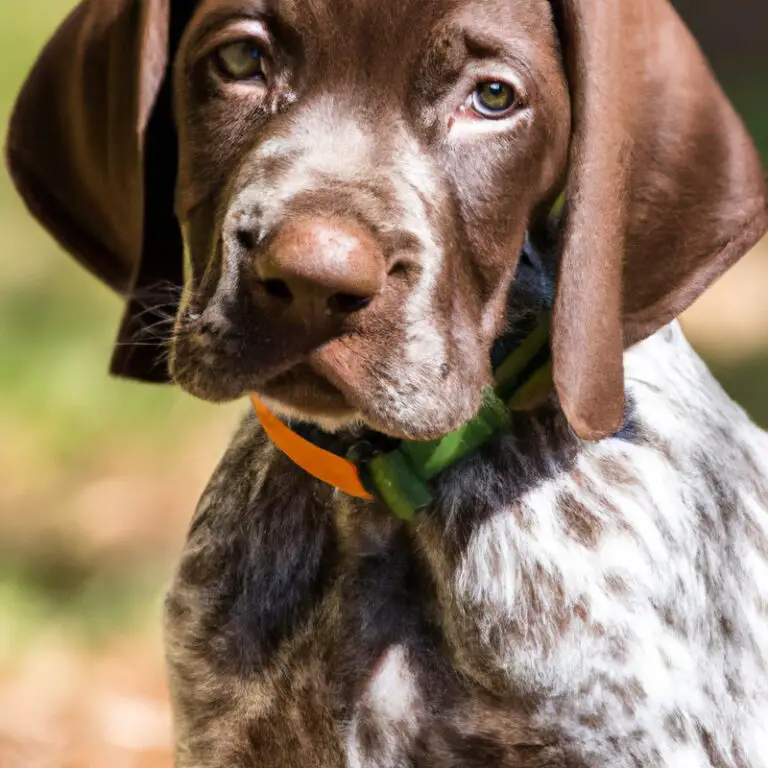Are German Shorthaired Pointers Good With Small Children?
Key Takeaways:
- German Shorthaired Pointers generally have a good temperament around small children.
- They are known to be patient and tolerant, making them suitable family pets.
- Proper socialization and training are crucial to ensure a positive interaction between the breed and children.
- Supervision is always recommended when German Shorthaired Pointers are around small children to prevent any potential accidents.
Are you wondering if German Shorthaired Pointers make great companions for small children? As a proud owner of this energetic and friendly breed, I can assure you that German Shorthaired Pointers have the potential to be wonderful family dogs.
In this article, we’ll explore the temperament of these pointers, the importance of early socialization and training, and how to ensure a positive relationship between them and small children.
However, it’s crucial to establish boundaries, supervise interactions, and teach children how to safely interact with these playful dogs. So, let’s dive in and discover how to create a harmonious bond between German Shorthaired Pointers and small children.
| German Shorthaired Pointers | Small Children | |
| Temperament | Energetic, friendly, and intelligent | Curious, active, and playful |
| Size | Medium to large | Small to medium |
| Activity Level | High | High |
| Socialization | Generally good with proper training and socialization | Require supervision and education around dogs |
| Patience | Generally patient and tolerant | May need time to learn how to interact properly with dogs |
| Energy Levels | Require regular exercise and mental stimulation | Require regular physical activity and playtime |
| Training | Easy to train with consistent and positive reinforcement | May need supervision and guidance during interactions |
| Playfulness | Playful and enjoy engaging in activities | Enjoy playing with pets and toys |
| Supervision | May be required when interacting with small children | Adult supervision is necessary during interactions with dogs |
The Temperament of German Shorthaired Pointers
Friendly and Playful Nature of German Shorthaired Pointers
German Shorthaired Pointers are known for their friendly and playful nature. They are happy, energetic dogs that love to interact with people and other animals.
They have a natural affinity for children and often become their loyal playmates.
With their playful and outgoing temperament, German Shorthaired Pointers make great companions for families with young children. They enjoy joining in on games and activities, making them a fun addition to any household.
Their friendly nature also makes them adaptable to different situations and well-suited for socializing with other pets and people.
Importance of Early Socialization and Training
When it comes to raising a well-behaved and balanced dog, early socialization and training are key factors. They play a crucial role in shaping your dog’s behavior and ensuring they grow up to be happy and confident pets.
First and foremost, early socialization helps your dog become familiar with different environments, people, and animals.
By exposing them to a variety of experiences and situations from a young age, you can help prevent fear and anxiety later in life. Socialization also teaches your dog proper manners and how to interact appropriately with both humans and other animals.
Training is equally important as it establishes boundaries, teaches basic commands, and helps with problem-solving skills.
By implementing consistent training methods, you can prevent behavioral issues and ensure your dog understands what is expected of them. Training also strengthens the bond between you and your dog, creating a harmonious relationship built on trust and respect.
Incorporating early socialization and training into your dog’s routine is essential.
It sets the foundation for their lifelong behavior and helps them become well-rounded members of the family.
Understanding the Energetic Level of German Shorthaired Pointers
Understanding the energetic level of German Shorthaired Pointers is key to providing them with the care they need. These dogs have a high energy level and require plenty of exercise and mental stimulation.
They love to play and run, so be prepared for lots of activity.
Regular walks, runs, and engaging games will help keep them happy and prevent boredom. Providing them with a space to run and play is also important.
Keep in mind that their high energy level may not be suitable for everyone, but if you’re an active person who enjoys outdoor activities, they can make great companions.
German Shorthaired Pointers and Small Children
Supervised Interactions between German Shorthaired Pointers and Small Children
Supervised interactions between German Shorthaired Pointers and small children are essential to ensure their safety and a positive experience for both. First and foremost, always have an adult present to supervise the interaction.
Make sure the child understands how to approach and handle the dog gently.
Teach them not to pull ears or tail, and never leave them unsupervised together. Encourage calm and respectful behavior from both the dog and the child.
By providing guidance and supervision, you can create a safe and harmonious environment for both the German Shorthaired Pointer and the child.
Teaching Children How to Safely Interact with German Shorthaired Pointers
Teaching children how to safely interact with German Shorthaired Pointers is essential to promote a positive and safe relationship between them. Here are some important tips to keep in mind:
- Always supervise: First and foremost, make sure there is adult supervision when children and German Shorthaired Pointers are together. This ensures that any potential risks can be immediately addressed.
- Gentle touch: Teach children to approach the dog calmly and gently. Encourage them to stroke the dog’s back or chest, avoiding sensitive areas like the face or tail.
- Respect personal space: Teach children to respect the dog’s personal space. They should understand that dogs need their own space and should not invade it while they eat, sleep, or rest.
- No rough play: It’s crucial to explain that rough play, pulling the dog’s ears or tail, or chasing them can make the dog feel uncomfortable or scared. Encourage kind and gentle play instead.
- Body language: Teach children to read the dog’s body language. They should learn to recognize signs of fear, stress, or discomfort. If the dog shows any of these signs, children should back away and give the dog space.
- Food safety: Emphasize that children should never approach a German Shorthaired Pointer while they are eating. This can prevent any potential food guarding behavior.
- Teach boundaries: Establish boundaries for both the children and the dog. Children need to understand that some actions, like climbing on the dog or bothering them while they sleep, are not acceptable.
By educating children on these practices, we can help ensure a happy and safe relationship between them and German Shorthaired Pointers.
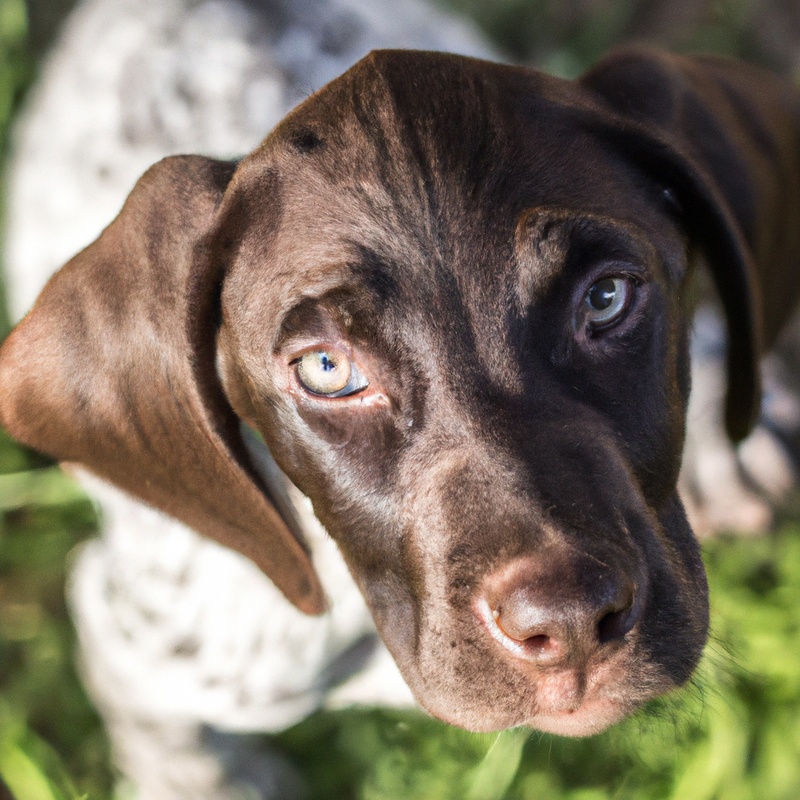
Potential Challenges and How to Address Them
Potential Challenges and How to Address Them One potential challenge when it comes to German Shorthaired Pointers and small children is their high energy levels. These dogs are known for their boundless energy and enthusiasm, which can be overwhelming for young children.
They may unintentionally knock over a small child or get too rough during playtime.
To address this challenge, it’s important to provide plenty of exercise and mental stimulation for your German Shorthaired Pointer. Take them on regular walks or runs to help burn off excess energy.
Additionally, teach your dog appropriate behavior around children, such as sitting or lying down when interacting with them.
Another challenge is the breed’s tendency to become possessive or protective of their toys or food. This can pose a risk to small children who may unknowingly approach the dog while they are eating or playing with their toys.
To address this challenge, establish clear boundaries and rules regarding food and toys from an early age.
Teach your dog to share and take turns, and never leave them unattended with small children around their food or toys. Supervise all interactions between your German Shorthaired Pointer and your child to ensure everyone’s safety.
Lastly, German Shorthaired Pointers can be prone to jumping up on people, including small children.
While this behavior may be harmless, it can be intimidating for young children or potentially cause injury if the dog is too strong. To address this challenge, teach your dog to greet people calmly and provide alternative behaviors, such as sitting or lying down, when greeting children.
Consistently enforce rules and reward your dog for good behavior.
By addressing these potential challenges and providing proper training and supervision, German Shorthaired Pointers can have a wonderful relationship with small children.

Tips for Ensuring a Positive Relationship between German Shorthaired Pointers and Small Children
Establishing Boundaries and Rules for Both Children and Dogs
Establishing boundaries and rules is essential when it comes to creating a positive relationship between German Shorthaired Pointers and small children. First and foremost, it’s important to teach your children how to behave around dogs.
Show them how to approach the dog gently, avoid pulling on their ears or tails, and not to disturb them while eating or resting.
Similarly, it’s crucial to set boundaries for your dog. Teach them to respect the child’s space and not to jump or play too rough.
Consistency is key, so make sure both the children and the dog understand the rules and expectations.
Creating a safe environment is also important. Use baby gates or crates to provide separate spaces for the dog and the child, especially during mealtime or when unsupervised.
This helps prevent any accidental interactions that could lead to negative experiences.
Engaging in Regular Exercise and Playtime for Proper Energy Release
Engaging in regular exercise and playtime with your German Shorthaired Pointer is crucial for their well-being and proper energy release. First and foremost, these dogs are known for their high energy levels and need plenty of physical activity to stay happy and healthy.
Daily walks, jogs, or runs are a great way to burn off their excess energy and prevent destructive behaviors.
In addition to physical exercise, mental stimulation is also important for these intelligent dogs. Interactive toys, puzzle games, and obedience training can help challenge their minds and tire them out.

Involving Children in the Dog’s Care and Training
Involving children in the care and training of your German Shorthaired Pointer can be a wonderful way to strengthen their bond and teach them responsibility. Plus, it helps your dog see children as respected leaders.
Here are a few simple ways to involve your children in your dog’s care and training:
- Walking and Exercise: Let your child take part in daily walks and play sessions with your dog. They can help with leash training and basic commands like “sit” and “stay.” This not only keeps your dog active but also allows your child to learn how to handle a dog safely.
- Feeding and Watering: Assign your child the responsibility of feeding or giving water to your furry friend. Teach them the appropriate portion sizes and make sure they understand the importance of a balanced diet for the dog’s health.
- Grooming: Your child can help with brushing your dog’s coat or even assist during bath time. Show them how to be gentle and calm while grooming, making it a positive experience for both the child and the dog.
- Basic Commands: Teach your child basic commands, like “sit,” “stay,” or “come.” This can be done in a fun and interactive way, making the training sessions enjoyable for everyone involved.
Additional Considerations and Precautions
Assessing the Individual Temperament of German Shorthaired Pointers
Assessing the individual temperament of German Shorthaired Pointers is essential when considering their compatibility with small children. One way to do this is by spending time with the specific dog to observe its behavior and reactions.
Pay attention to signs of aggression or nervousness, as well as how it interacts with children.
Additionally, consider the dog’s previous exposure to children and its training background. Keep in mind that every dog is unique, so it’s important to assess each German Shorthaired Pointer on an individual basis.
Importance of Proper Supervision and Never Leaving Children and Dogs Unattended
Proper supervision is crucial when it comes to children and dogs interacting. First and foremost, it is essential to never leave children and dogs unattended.
This is because even the most gentle and well-trained dogs can display unexpected behavior, especially when provoked or stressed.
By always being present and attentive, you can prevent any accidents or potential harm to both the child and the dog.
Seeking Professional Guidance and Support if Needed
If you have concerns about whether a German Shorthaired Pointer is a good fit for your family with small children, seeking professional guidance and support can be helpful. A professional dog trainer or behaviorist can assess the specific needs of your family and provide expert advice on whether this breed is suitable for your situation.
They can also give you guidance on how to introduce the dog to your children and provide ongoing support to ensure a safe and positive relationship between them.
Final Verdict
German Shorthaired Pointers can indeed be wonderful companions for small children, but it takes effort and responsibility from both the parents and the dog owners. With their friendly and playful nature, early socialization and training, and understanding of their energetic level, German Shorthaired Pointers can form a strong bond with children.
However, it is crucial to supervise their interactions and teach children how to safely engage with these dogs.
By establishing boundaries, engaging in regular exercise, and involving children in their care and training, a positive relationship can be fostered. Nevertheless, it’s important to assess the individual temperament of both the dog and the child, never leave them unattended, and seek professional guidance if needed.
Overall, by following these tips and precautions, the bond between German Shorthaired Pointers and small children can thrive, creating a joyful and harmonious environment for everyone involved.

